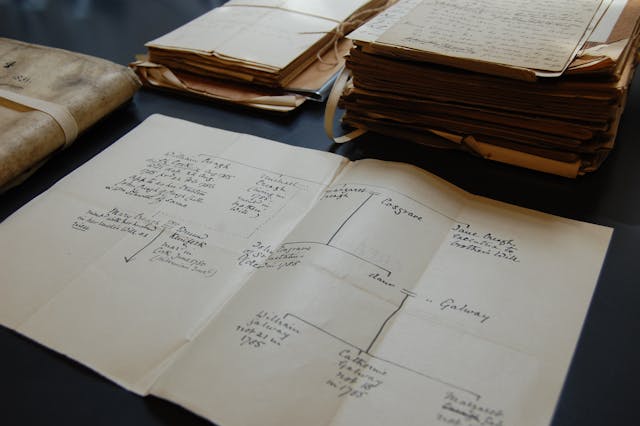
How to Get the Best Results from the IGI
The IGI, or International Genealogical Index, is a valuable tool that all genealogists should use: especially those doing research in the UK. The IGI has hundreds of millions of names listed in the database that can be available to you by learning how to best search the index.
What is the IGI?
The IGI contains individual records of births or christenings, marriages, and deaths or burials for people all over the world. The IGI was first published in 1973 by the Church of Jesus Christ of Latter-day Saints; it was then closed in 2008, which means that no more information can be added to the index. The IGI was created from two unique sources. First, original vital records were abstracted and indexed by volunteers. Second, the community contributed their own personal family names, which were not always the most accurate. To find the most accurate information, it would be best to first search the Community Indexed part of the IGI.
Where is it held?
The IGI can be found on www.familysearch.org, but it was originally found on microfiche when it was first published in 1973. It has gone through a series of format changes, including CD and its eventual use online. The easiest way to find the IGI is to search ‘International Genealogical Index’ on your preferred search engine, which will take you to the page where the IGI is held on FamilySearch (www.familysearch.org/search/collection/igi). When searching records on FamilySearch, you automatically search the IGI; but the easiest way to find certain records in the vast collections on FamilySearch is to search the IGI separately. You can also search for the IGI by clicking on FamilySearch’s search page (www.familysearch.org/search), and browse all published collections, where you can find IGI in the collections (Crtl + F; IGI).
Refining Your Search
Historically, the IGI could only be searched by a person’s name and the country they lived in. Today, the IGI can be searched many different ways. You can search the Community Contributed and Community Indexed IGI separately, search by forename and surname, event (birth, marriage, death), their residence, as well as search relationships (spouse or parents). You can also search by Batch Number, or the number that was created when someone was indexing the original records. Film Number can also be searched, to see if a microfilm copy is in the Family History Library.
While all these search functions are helpful when finding your ancestors, it may not be enough to search through the hundreds of millions of names and get the results you want. There are many IGI search tools that can be used to help focus your search to a specific place. Hugh Wallis’s website England IGI Batch Numbers (Hugh Wallis's Genealogical Web Sites (rootsweb.com) is a great tool that allows you to search the IGI for individual parishes. To use this website, click on the county you are doing research, and then search for the parish.
For example, if I was doing research in Haselbury Bryan, Dorset, I would see that the IGI only has marriage entries from the years 1731-1847, with the Batch Number M159011. When you click the Batch Number, a new tab opens which allows you to search a specific forename and surname. When you enter the search, it will take you directly to the FamilySearch’s IGI website and the results of that one batch will show, rather than the entire contents of the IGI.
What Information Will I Find?
After searching the IGI and finding a record that may be your ancestor, there will be information that the IGI gives that needs some explanation. If I was searching Haselbury Bryan, Dorset’s marriage records from 1731-1847 for William Bollen, much information may appear for this ancestor (marriage), including:
• Name
• Birth Date
• Birthplace
• Age
• Spouse’s Name
• Spouse’s Birth Date
• Spouse’s Birth Place
• Spouse’s Age
• Event Date
• Event Place
• Father’s Name
• Mother’s Name
• Spouse’s Father’s Name
• Spouse’s Mother’s Name
• Race
• Marital Status
• Previous Wife’s Name
• Spouse’s Marital Status
• Spouse’s Previous Husband’s Name
• Indexing Project (Batch) Number
• System Origin
• GS Film Number
• Reference ID
This seems like a lot of information, but normally most records only include the names of the people from the event, the event date, and event place. It depends on many factors, including the information found on the original record, and what the indexer entered into the database. The Indexing Project (Batch) Number is used to identify specific batches of information that was indexed at the same time; in this case, the marriages of Haselbury Bryan. The System Origin shows that these records come from England. The GS Film Number is the film reference to the original parish record filmed at the Family History Library. The Reference ID is the FamilySearch ID that the person has been assigned.
Citing the IGI
Source information can also be found, which gives the IGI collection name, the URL, the date accessed, and the person’s names that were searched. Try to use as much information as possible to identify the record in the IGI, because the URL may change at any time.
How to Use the Information
The International Genealogical Index is a very useful tool that allows a researcher to quickly find vital information about an ancestor. While it is important to find this information, it is almost more important to find the original. It may be that a name is indexed incorrectly, or that there is more information on the original record that was not recorded in the IGI. The IGI should never be the end of your search: stay curious, do thorough research, and you will be rewarded.
Further Resources
For more in depth history and unique uses of the IGI, please see this article published on the FamilySearch Wiki: International Genealogical Index (IGI) - FamilySearch Historical Records • FamilySearch
Hugh Wallis IGI Batch Numbers: https://freepages.rootsweb.com/~hughwallis/genealogy/
_______________________________________________________
Written by Abbie Black 2013
© Society of Genealogists 2017
Join us
As a member, you can make the most of our resources, access our experts, and find a welcoming community of people interested in family history and genealogy.
We all have roots. Let’s find them together.
